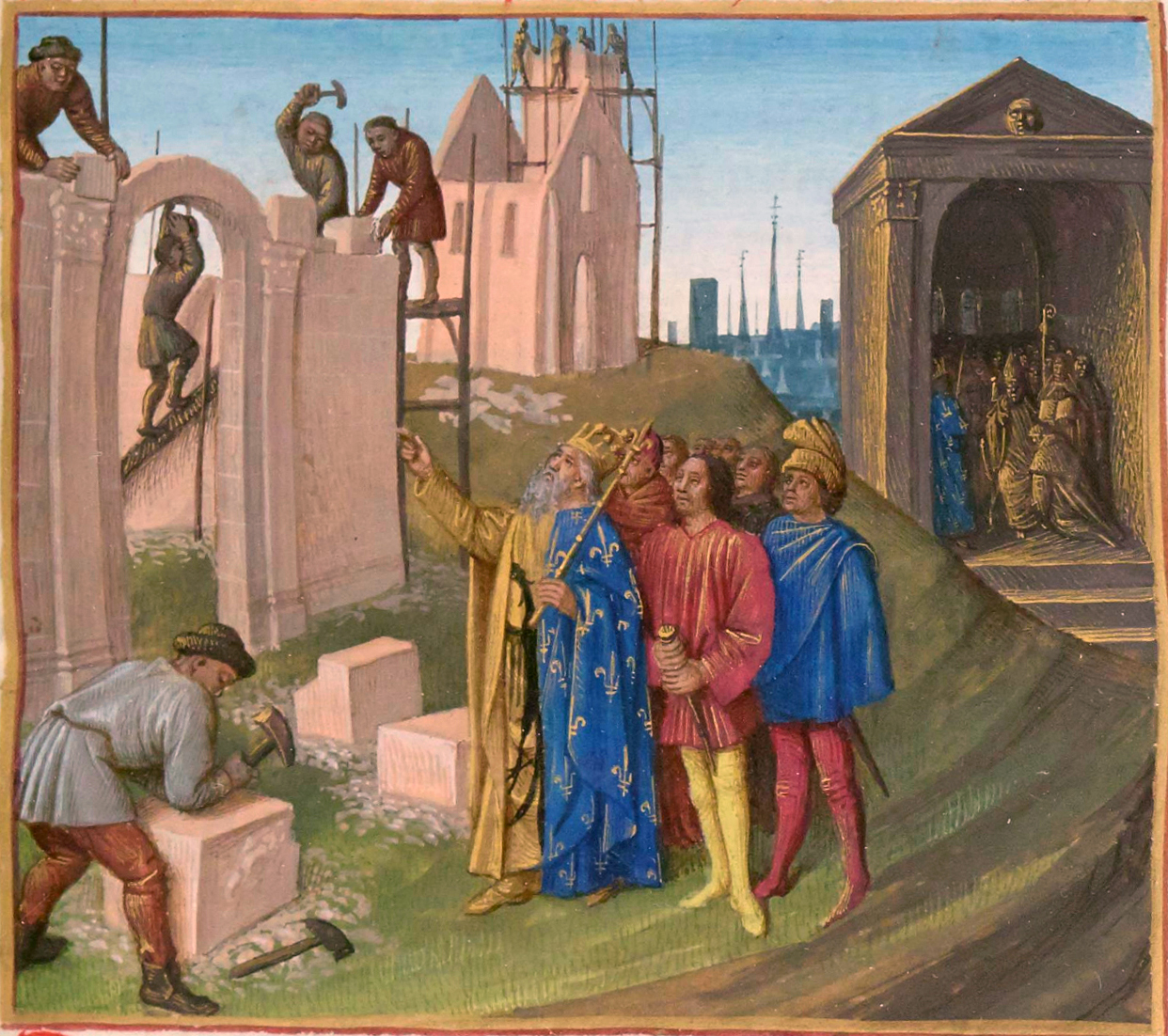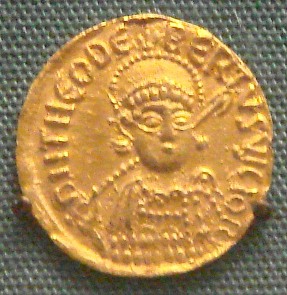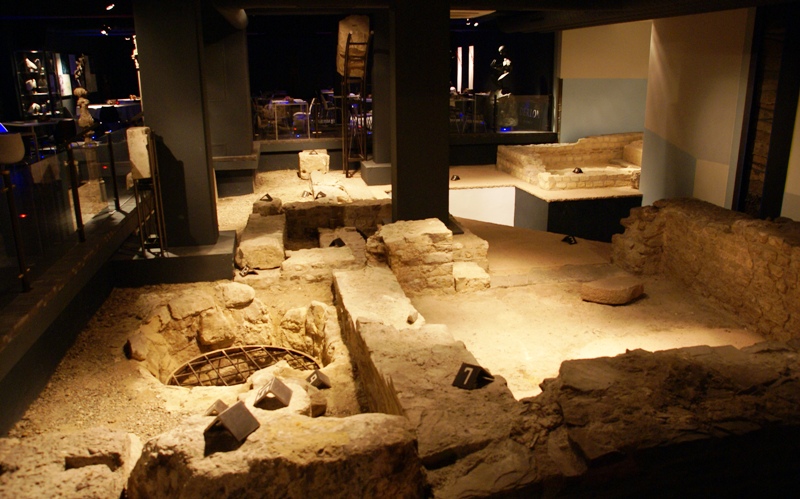|
Nithard Of Liège
Nithard was bishop of Liège, in the Low Countries, from 1038 to 1042. Life Nithard, who had lived in Liège for decades, was elected bishop in succession to his uncle Reginard, on the endorsement of Wazo of Liège, who had been ahead in the voting and would eventually be elected as his successor. The monastic chronicler Renier of St Laurent recorded that Nithard had kept for himself the riches that his uncle had intended to be used for the benefit of his soul after his death. Alphonse Delescluse, "Nithard", ''Biographie Nationale de Belgique''vol. 15(Brussels, 1899), 749-750. Immediately after his election, Nithard travelled to Italy, where his appointment was confirmed by Henry III, King of the Romans, at Nonantola in January 1038. In August 1039 he attended upon the king in Maastricht. On 17 and 24 January 1040 his presence was again attested in the royal entourage, at Augsburg and Ulm respectively. In Ulm the emperor granted the bishop the County of Haspinga. On 5 June 1040 ... [...More Info...] [...Related Items...] OR: [Wikipedia] [Google] [Baidu] [Amazon] |
Bishop Of Liège
A bishop is an ordained member of the clergy who is entrusted with a position of authority and oversight in a religious institution. In Christianity, bishops are normally responsible for the governance and administration of dioceses. The role or office of the bishop is called episcopacy or the episcopate. Organisationally, several Christian denominations utilise ecclesiastical structures that call for the position of bishops, while other denominations have dispensed with this office, seeing it as a symbol of power. Bishops have also exercised political authority within their dioceses. Traditionally, bishops claim apostolic succession, a direct historical lineage dating back to the original Twelve Apostles or Saint Paul. The bishops are by doctrine understood as those who possess the full priesthood given by Jesus Christ, and therefore may ordain other clergy, including other bishops. A person ordained as a deacon, priest (i.e. presbyter), and then bishop is understood to hol ... [...More Info...] [...Related Items...] OR: [Wikipedia] [Google] [Baidu] [Amazon] |
Augsburg
Augsburg ( , ; ; ) is a city in the Bavaria, Bavarian part of Swabia, Germany, around west of the Bavarian capital Munich. It is a College town, university town and the regional seat of the Swabia (administrative region), Swabia with a well preserved Altstadt (historical city centre). Augsburg is an Urban districts of Germany, urban district and home to the institutions of the Augsburg (district), Landkreis Augsburg. It is the List of cities in Bavaria by population, third-largest city in Bavaria (after Munich and Nuremberg), with a population of 304,000 and 885,000 in its metropolitan area. After Neuss, Trier, Worms, Germany, Worms, Cologne and Xanten, Augsburg is one of Germany's oldest cities, founded in 15 BC by the Romans as Augsburg#Early history, Augusta Vindelicorum and named after the Roman emperor Augustus. It was a Free Imperial City from 1276 to 1803 and the home of the patrician (post-Roman Europe), patrician Fugger and Welser families that dominated European ban ... [...More Info...] [...Related Items...] OR: [Wikipedia] [Google] [Baidu] [Amazon] |
1042 Deaths
1 (one, unit, unity) is a number, numeral, and glyph. It is the first and smallest positive integer of the infinite sequence of natural numbers. This fundamental property has led to its unique uses in other fields, ranging from science to sports, where it commonly denotes the first, leading, or top thing in a group. 1 is the unit of counting or measurement, a determiner for singular nouns, and a gender-neutral pronoun. Historically, the representation of 1 evolved from ancient Sumerian and Babylonian symbols to the modern Arabic numeral. In mathematics, 1 is the multiplicative identity, meaning that any number multiplied by 1 equals the same number. 1 is by convention not considered a prime number. In digital technology, 1 represents the "on" state in binary code, the foundation of computing. Philosophically, 1 symbolizes the ultimate reality or source of existence in various traditions. In mathematics The number 1 is the first natural number after 0. Each natural ... [...More Info...] [...Related Items...] OR: [Wikipedia] [Google] [Baidu] [Amazon] |
10th-century Births
1 (one, unit, unity) is a number, numeral, and glyph. It is the first and smallest positive integer of the infinite sequence of natural numbers. This fundamental property has led to its unique uses in other fields, ranging from science to sports, where it commonly denotes the first, leading, or top thing in a group. 1 is the unit of counting or measurement, a determiner for singular nouns, and a gender-neutral pronoun. Historically, the representation of 1 evolved from ancient Sumerian and Babylonian symbols to the modern Arabic numeral. In mathematics, 1 is the multiplicative identity, meaning that any number multiplied by 1 equals the same number. 1 is by convention not considered a prime number. In digital technology, 1 represents the "on" state in binary code, the foundation of computing. Philosophically, 1 symbolizes the ultimate reality or source of existence in various traditions. In mathematics The number 1 is the first natural number after 0. Each natural numbe ... [...More Info...] [...Related Items...] OR: [Wikipedia] [Google] [Baidu] [Amazon] |
Bishop Of Liège
A bishop is an ordained member of the clergy who is entrusted with a position of authority and oversight in a religious institution. In Christianity, bishops are normally responsible for the governance and administration of dioceses. The role or office of the bishop is called episcopacy or the episcopate. Organisationally, several Christian denominations utilise ecclesiastical structures that call for the position of bishops, while other denominations have dispensed with this office, seeing it as a symbol of power. Bishops have also exercised political authority within their dioceses. Traditionally, bishops claim apostolic succession, a direct historical lineage dating back to the original Twelve Apostles or Saint Paul. The bishops are by doctrine understood as those who possess the full priesthood given by Jesus Christ, and therefore may ordain other clergy, including other bishops. A person ordained as a deacon, priest (i.e. presbyter), and then bishop is understood to hol ... [...More Info...] [...Related Items...] OR: [Wikipedia] [Google] [Baidu] [Amazon] |
Collegiate Church Of Saint Gertrude, Nivelles
The Collegiate Church of St. Gertrude () is a Roman Catholic collegiate church in Nivelles, Walloon Brabant, Belgium, which was built in the 11th century. It is dedicated to Saint Gertude, the patron saint of cats. History This church was built to serve Nivelles Abbey, originally a monastery of Benedictine nuns founded by Itta of Metz, the widow of Pepin of Landen, and mother of Gertrude of Nivelles, the first abbess, in the 7th century. Her remains are buried in a chapel of the church. This structure was built in the early 11th century and consecrated in 1046 by Wazo, Bishop of Liège, in the presence of the Emperor Henry III. It is an example both of Mosan art and of Ottonian architecture. With the growing membership of members of the nobility among the nuns starting in the 12th century, the community gradually changed its character from its monastic one until it had become a community of canonesses regular by the 15th century, at the latest. At that point, the church acqui ... [...More Info...] [...Related Items...] OR: [Wikipedia] [Google] [Baidu] [Amazon] |
Aachen
Aachen is the List of cities in North Rhine-Westphalia by population, 13th-largest city in North Rhine-Westphalia and the List of cities in Germany by population, 27th-largest city of Germany, with around 261,000 inhabitants. Aachen is located at the northern foothills of the High Fens and the Eifel Mountains. It sits on the Wurm (Rur), Wurm River, a tributary of the Rur (river), Rur, and together with Mönchengladbach, it is the only larger German city in the drainage basin of the Meuse. It is the westernmost larger city in Germany, lying approximately west of Cologne and Bonn, directly bordering Belgium in the southwest, and the Netherlands in the northwest. The city lies in the Meuse–Rhine Euroregion and is the seat of the Aachen (district), district of Aachen ''(Städteregion Aachen)''. The once Celts, Celtic settlement was equipped with several in the course of colonization by Roman people, Roman pioneers settling at the warm Aachen thermal springs around the 1st cen ... [...More Info...] [...Related Items...] OR: [Wikipedia] [Google] [Baidu] [Amazon] |
Münster
Münster (; ) is an independent city#Germany, independent city (''Kreisfreie Stadt'') in North Rhine-Westphalia, Germany. It is in the northern part of the state and is considered to be the cultural centre of the Westphalia region. It is also a Münster (region), state district capital. Münster was the location of the Münster Rebellion, Anabaptist rebellion during the Protestant Reformation and the site of the signing of the Treaty of Westphalia ending the Thirty Years' War in 1648. Today, it is known as the bicycle capital of Germany. Münster gained the status of a ''Großstadt'' (major city) with more than 100,000 inhabitants in 1915. , there are 300,000 people living in the city, with about 61,500 students, only some of whom are recorded in the official population statistics as having their primary residence in Münster. Münster is a part of the international EUREGIO, Euregio region with more than 1,000,000 inhabitants (Enschede, Hengelo, Gronau, North Rhine-Westphalia, G ... [...More Info...] [...Related Items...] OR: [Wikipedia] [Google] [Baidu] [Amazon] |
Poppo Of Stavelot
Saint Poppo ( Deinze, 977 – Marchiennes, 25 January 1048) was a knight of noble descent who turned to a monastic life after experiencing a spiritual conversion. He became one of the best known abbots of Stavelot and was one of the first recorded Flemish pilgrims to the Holy Land. Liturgically, he is commemorated on 25 January. Biography The ''Vita Popponis'', the biography of Poppo, was written shortly after his death by the monk Onulf and the abbot Everhelm of the Abbey of Hautmont. According to this source, Poppo belonged to a noble family of Flanders; his parents being Tizekinus and Adalwif. Around the year 1000, he made a pilgrimage to the Holy Land with two companions. Soon after this he also went to Rome. He was about to marry a lady of noble family, when a flame suddenly burst out of the sky late at night and kept his lance radiating. Poppo believed this to be an illumination of the Holy Spirit, and soon after, he decided to enter the monastery of Saint Thierry at ... [...More Info...] [...Related Items...] OR: [Wikipedia] [Google] [Baidu] [Amazon] |
Princely Abbey Of Stavelot-Malmedy
The Princely Abbey of Stavelot-Malmedy, also Principality of Stavelot-Malmedy, sometimes known with its German name Stablo, was an Hochstift, ecclesiastical principality of the Holy Roman Empire. Princely power was exercised by the Order of Saint Benedict, Benedictine abbot of the imperial double monastery of Stavelot and Malmedy, founded in 651. Along with the Duchy of Bouillon, Duchy of and the Prince-Bishopric of Liège, Prince-Bishopric of , it was one of only three principalities of the Southern Netherlands that were never part of the Spanish Netherlands, later the Austrian Netherlands, which after 1500 were assigned to the Burgundian Circle while the principalities were assigned to the Lower Rhenish–Westphalian Circle, Lower Rhenish Imperial Circle. As a prince-abbot, the abbot of Stavelot-Malmedy sat on the Ecclesiastical Bench of the College of Ruling Princes of the Imperial Diet (Holy Roman Empire), Imperial Diet alongside the prince-bishops. Along with the handful o ... [...More Info...] [...Related Items...] OR: [Wikipedia] [Google] [Baidu] [Amazon] |
Pagus Of Hasbania
The ''pagus'' or '' gau'' of ''Hasbania'' was a large early medieval territory in what is now eastern Belgium. It is now approximated by the modern French- and Dutch-speaking region called Hesbaye in French, or ''Haspengouw'' in Dutch — both being terms derived from the medieval one. Unlike many smaller ''pagi'' of the period, ''Hasbania'' apparently never corresponded to a single county. It already contained several in the 9th century. It is therefore described as a "" (large gau), like the Pagus of Brabant, by modern German historians such as Ulrich Nonn. The Hesbaye region was a core agricultural territory for the early Franks who settled in the Roman ''Civitas Tungrorum'', which was one of the main parts of early Frankish Austrasia, and later Lotharingia. The region was also culturally important, a central part of what is referred to in art history as the Mosan region. It contained a substantial Romanized population and the seat of a large bishopric, that played a role in co ... [...More Info...] [...Related Items...] OR: [Wikipedia] [Google] [Baidu] [Amazon] |
Maastricht
Maastricht ( , , ; ; ; ) is a city and a Municipalities of the Netherlands, municipality in the southeastern Netherlands. It is the capital city, capital and largest city of the province of Limburg (Netherlands), Limburg. Maastricht is located on both sides of the Meuse (), at the point where the river is joined by the Jeker. Mount Saint Peter (''Sint-Pietersberg'') is largely situated within the city's municipal borders. Maastricht is adjacent to the border with Belgium and is part of the Meuse-Rhine Euroregion, an international metropolis with a population of about 3.9 million, which includes the nearby German and Belgian cities of Aachen, Liège, and Hasselt. Maastricht developed from a Roman Republic, Roman settlement (''Trajectum ad Mosam'') to a medieval river trade and religious centre. In the 16th century it became a garrison town and in the 19th century an early industrial centre. Today, the city is a thriving cultural and regional hub. It became well known through ... [...More Info...] [...Related Items...] OR: [Wikipedia] [Google] [Baidu] [Amazon] |








